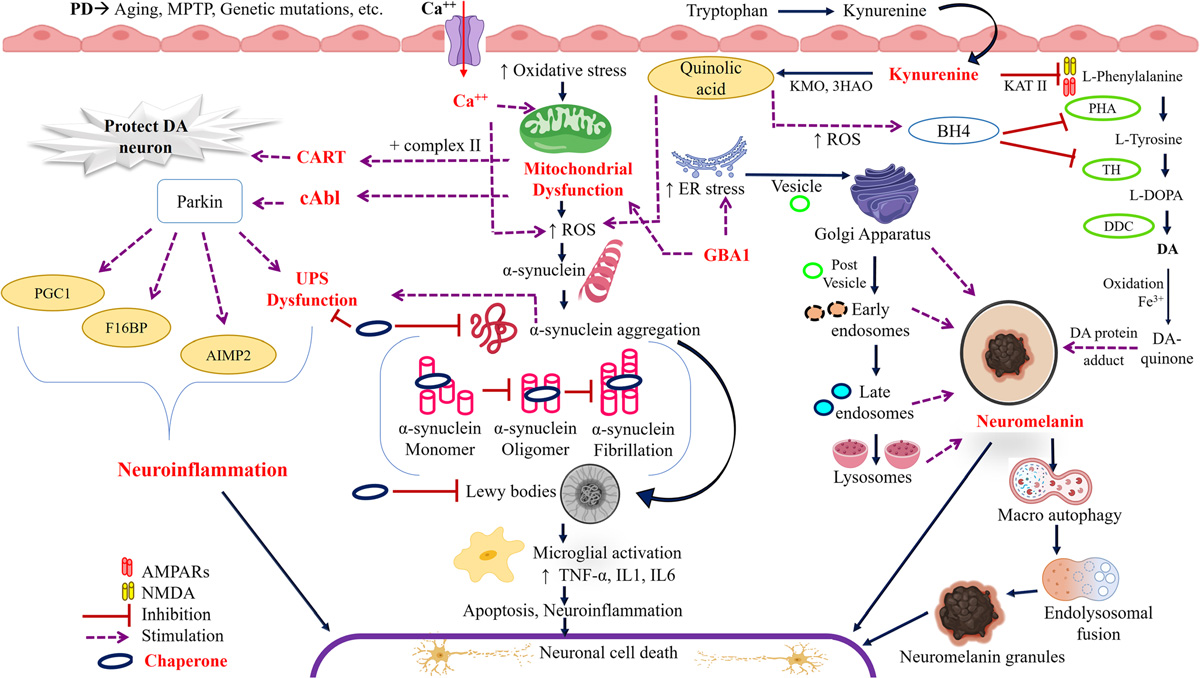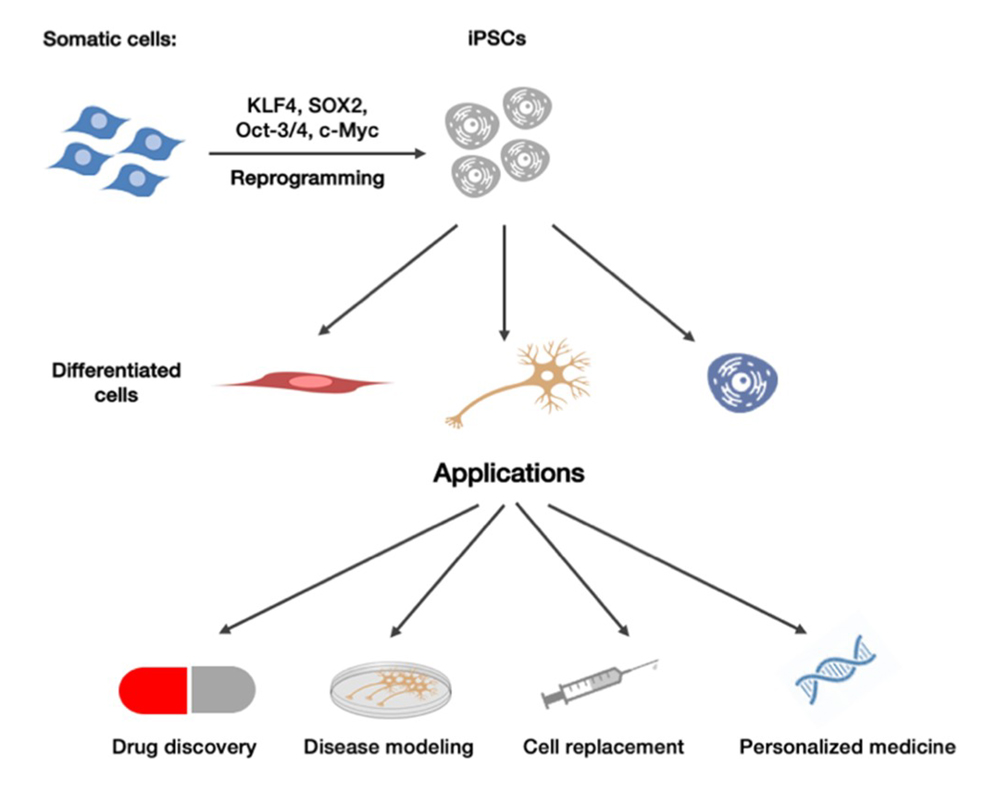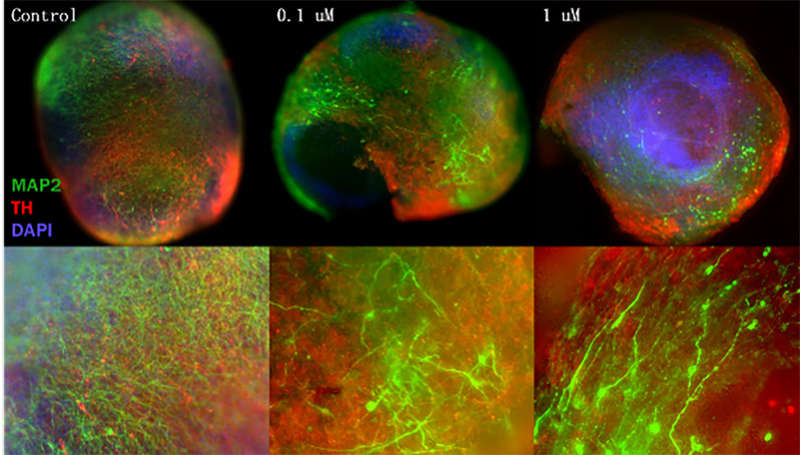
Leave message
Can’t find what you’re looking for?
Fill out this form to inquire about our custom protein services!
Inquire about our Custom Services >>



































> Insights > Unlocking Parkinson's Disease: From Disease Mechanisms to Precision Treatment 
Parkinson’s disease (PD) is a common neurodegenerative disorder, and its prevalence continues to rise with the global trend of population aging. It is estimated that over 10 million people worldwide are currently affected by PD. This chronic condition is mainly characterized by resting tremors, bradykinesia, muscle rigidity, and balance problems, all of which significantly impact patients’ quality of life. Although current medications can help alleviate symptoms to some extent, there is still no cure. As a result, researchers are continuously working to better understand the underlying mechanisms of the disease and to develop more effective treatments.
The core pathological features of PD include the progressive loss of dopaminergic neurons (DNs) in the substantia nigra and the formation of Lewy bodies. Studies suggest that this process involves multiple interacting molecular mechanisms, with the abnormal aggregation of α-synuclein (α-syn) playing a key role. As the main component of Lewy bodies, α-syn is believed to spread between neurons via a prion-like mechanism, inducing protein misfolding and neurodegeneration.

https://doi.org/10.1007/s11011-020-00636-w
Complex Regulatory Network of PD
Mitochondrial dysfunction, lysosomal-autophagy pathway defects, oxidative stress, and chronic neuroinflammation are also key drivers of PD. Various signaling pathways and genetic mutations are linked to these mechanisms. For instance, LRRK2 (leucine-rich repeat kinase 2) mutations enhance kinase activity, promoting α-syn phosphorylation and impairing autophagy; MAO-B (monoamine oxidase B) generates toxic byproducts like hydrogen peroxide, worsening oxidative stress; and ADORA2A (adenosine A2A receptor) regulates striatal neuron excitability and microglial activation, crucial for neuroinflammation and motor control.
In the study of PD pathogenesis and drug development, constructing reliable disease models is crucial. While traditional MPTP or 6-OHDA animal models can partially replicate DN degeneration, they have significant limitations in reflecting the complex genetic background of humans.
In recent years, with the rapid development of induced pluripotent stem cell (iPSC) technology, researchers can now reprogram somatic cells from various sources to generate DNs. These cell models not only help reveal disease-related cellular phenotypes and functional differences but also provide an ideal platform for drug screening, mechanistic studies, and the development of personalized treatment strategies.

https://doi.org/10.3390/ijms19123972
Potential Applications of iPSCs
On this basis, brain organoids further improve the model's physiological relevance by simulating key pathological processes such as α-syn aggregation, neuroinflammation, and neurodegeneration. For instance, Cerebral Organoids (Cat. No. CIPO-BWL001K) developed using ACROBiosystems' Cerebral Organoid Differentiation Kit (Cat. No. RIPO-BWM001K), were incubated with varying concentrations of α-syn Pre-formed Fibrils (PFFs) to construct a PD model. The experimental results showed a decrease in MAP2 and TH expression after PFF treatment, indicating α-syn-induced toxicity in mature neurons (MAP2) and DNs (TH), validating the model's potential for studying disease mechanisms and drug screening.

Neuronal damage in cerebral organoids induced by α-syn PFFs
On April 10, 2025, the U.S. Food and Drug Administration (FDA) announced that it would gradually eliminate the mandatory use of animal testing for drugs such as monoclonal antibodies, encouraging the use of alternative methods, including brain organoids. This move further enhances the potential of brain organoid models in PD research.

Currently, standard treatment for PD remains focused on dopamine replacement therapies, such as levodopa and dopamine agonists, which can significantly alleviate motor symptoms but fail to slow disease progression. Long-term use may also lead to complications like "on-off" phenomena or dyskinesia.
In recent years, treatment strategies have shifted towards precision medicine targeting pathological mechanisms. For instance, monoclonal antibodies targeting α-syn aggregation aim to block its abnormal spread, while small molecule inhibitors targeting LRRK2 mutations modulate disease pathways and autophagy. ADORA2A receptor antagonists influence neuronal excitability and neuroinflammation, expanding treatment options beyond dopamine pathways. Additionally, drug screening platforms using iPSC-derived DNs or brain organoids provide strong support for personalized treatments.
ACROBiosystems offers cutting-edge solutions for PD research, including target proteins, pre-formed fibrils (PFFs), dopaminergic neurons, and brain organoids, helping accelerate both basic and clinical research.
1. Pingale T, Gupta G L. Current and emerging therapeutic targets for Parkinson’s disease[J]. Metabolic Brain Disease, 2021, 36: 13-27. https://doi.org/10.1007/s11011-020-00636-w
2. Bordoni M, Rey F, Fantini V, et al. From neuronal differentiation of iPSCs to 3D neuro-organoids: Modelling and therapy of neurodegenerative diseases[J]. International Journal of Molecular Sciences, 2018, 19(12): 3972. https://doi.org/10.3390/ijms19123972
This web search service is supported by Google Inc.







